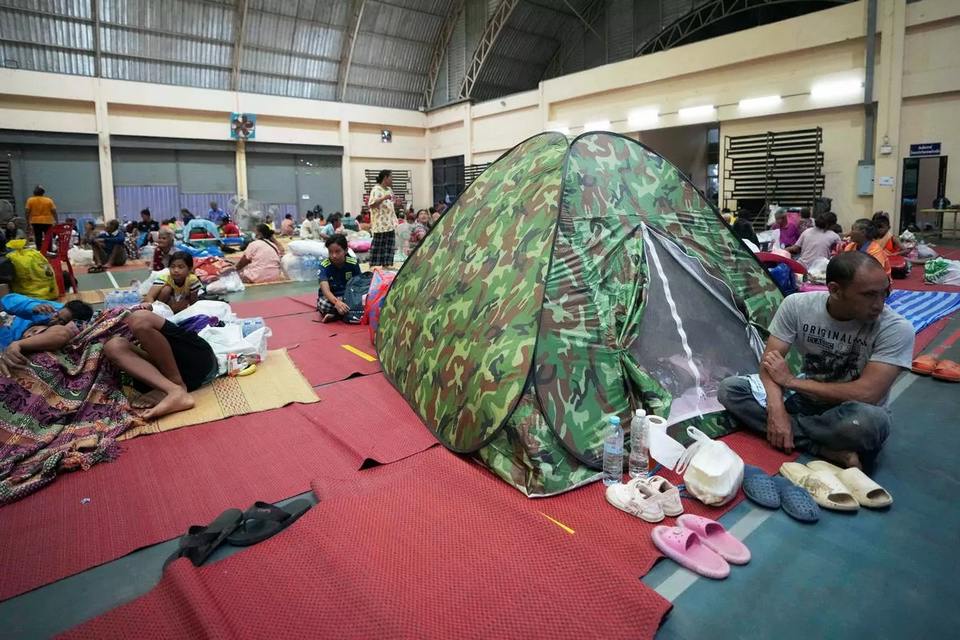Thailand’s holiday resorts unaffected by border crisis with Cambodia
Thai citizens shelter in emergency accommodation after a Cambodian rocket attack in a disputed zone.
Although several governments have issued travel warnings, none has advised against visiting Thailand and Cambodia. The British Foreign, Commonwealth and Development Office simply warns travellers not to go within 50 kms of the border in the at-risk provinces. The most popular destinations – Bangkok, Pattaya, Phuket, Chiang Mai, Hua Hin – are hundreds of miles from the scene of any shootings or panic. Cambodia’s main attractions in Phnom Penh and the famous archaeological site at Siem Reap are similarly free from border-related violence.
Few western vacationers to Thailand include border regions in their holiday itinerary, except to see the remains of 1,000 year-old temple ruins such as the magnificent Preah Vihear. These are closed anyway from either side for the duration of the conflict. Most of the land border’s 800 kms are not under dispute. There is separately a longstanding warning by British authorities not to visit three deep-south Thai provinces with Muslim secessionist movements. They are rarely visited by holidaymakers and irrelevant to the current crisis.
Travellers intending to visit both Thailand and Cambodia should bear in mind that all land border crossings between the two countries are currently sealed. Although they occasionally open to let through emergency cases, such as the sick or young students, international tourists are banned from crossing. Air schedules between the two countries are reported as normal, but flights are said to be heavily booked. If the ongoing conflict were to get worse, air travel between the protagonists could be compromised in tat-for-tat name calling.
Thai citizens shelter in emergency accommodation after a Cambodian rocket att
Pattaya immigration lawyer Jessataporn Bunnag said, “Most western tourists coming to Thailand, including all Brits, now receive 60 days visa-exempt on arrival with the offer to extend a further month at local immigration. Thus there is no need for them to go on border hops or visa runs to neighboring Cambodia.” He added that all international visitors should fill in the online form Thailand Digital Arrival Card not more than three days before arriving.
Border rows between the two neighbors go back over 100 years when disputed maps were drawn up by French colonialists who then ruled Cambodia but not Thailand. Over the years, 200 people have been killed or injured in periodic flareups at sensitive spots which mostly include temple ruins. Whilst Cambodia invariably seeks international rulings in its favour, Thailand’s position is that territorial disputes should be settled by the two parties alone.
Both countries are members of the regional trading block ASEAN, but the organization almost never becomes seriously involved in disputes between members. Both the United States and China have offered to mediate the current issue, but there is unease in both countries and beyond about appealing to divergent superpowers. The most likely outcome at present seems to be a mutual withdrawal to perceived lines of control. Thailand and Cambodia have too much in common, economically and culturally, to declare war. Assuming, of course, that insanity doesn’t break out.



